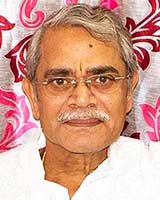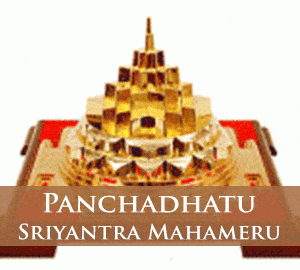Independent Sultanates in the Provinces ofNorthern and Western India
Jaunpur
The city of Jaunpur was founded by Firuz of the house of Tughluq to perpetuate the memory of his cousin and patron, Muhammad Jauna. We have noticed before how, during the period of confusion following the invasion of Timur, Khwaja Jahan threw off his allegiance to the Delhi SuItanate and founded a dynasty of independent rulers at Jaunpur, known as the Sharqi dyanasty after his title, “Malik-ush-Sharq”. He died in 1399, leaving his throne to his adopted son, Malik Qaranful, who assumed the title after a short reign, in 1402, and was succeeded by his younger brother, lbrahim Shah Sharqi. lbrahim ruled for about thirty-four years and was the ablest ruler of the Sharqi dynasty. Being himself a man of culture, he patronised art and literature as a result of which Jaunpur became an important centre of Muslim learning. This city was also adorned by the construction of beautiful buildings, marked by Hindu influence, and having mosques without minarets of the usual type. The famous Atala Masjid which stands now as a brilliant specimen of the Jaunpur style of architecture, was completed in A.D. 1408. lbrahim died in 1436 and was succeeded by his son, Mahmud Shah. The new king annexed the greater part of the district of Chunar, but his expedition against Kalpi proved unsuccessful. On making an attempt to occupy Delhi, he was defeated by Buhlul Lodi, who compelled him to return to Jaunpur. Mahmud died in A.D. 1457, when his son, Bhikhan, ascended the throne under the title of Muhammad Shah. But the unscrupulous conduct of this king highly incensed the nobles and his own relatives, who had him murdered and raised his brother, Husain Shah, to the throne. Soon after his accession, Husain Shah concluded in 1458 a four years’ truce with Buhlul Lodi of Delhi. He utilised this period in suppressing the independent zamindars of Tirhut, and in conducting a plundering expedition into Orissa, the Raja of which purchased peace by paying a vast treasure. He also led an army in 1466 to capture the fortress of Gwalior, but could not reduce it and retired when its Raja, Man Singh, paid him a heavy indemnity. After these initial successes, fortune turned against Husain Shah in his renewed war with Buhlul Lodi, who expelled him to Bihar and annexed the kingdom of Jaunpur to Delhi. Buhlul appointed his son, Barbak, governor of Jaunpur, permitting him to use the royal title and coin money. Thus the independence of Jaunpur came to an end. The period of Sharqi rule at Jaunpur, extending for about eighty-five years, was marked by prosperity, development of architecture, and an outburst of a high type of culture, which earned for the city, during Ibrahim’s reign, the title of “the Shiraz of India”.
Malwa
Annexed by Ala-ud-din Khalji in A.D. 1305, Malwa continued to be governed by Muslim chiefs, under the authority of Delhi, till it became independent, like other provinces, during the period of disorder after the invasion of Timur. Dilawar Khan Ghuri, who had been appointed governor of MaIwa, probably by Firuz of the house of Tughluq, made himself independent of the Delhi Sultanate for all practical purposes m 1401, though he did not formally renounce his allegiance to it or assume the “style of royalty”. In 1406 he was succeeded by his ambitious son, Alp Khan, who ascended the throne under the title of Hushang Shah. The new ruler was a man of restless spirit, and took a delight in adventurous enterprises and wars, in which he remained constantly engaged throughout his reign. In 1422 he left his capital for Orissa in the guise of a merchant and made a surprise attack on the unsuspecting Raja of that kingdom, who had to bribe him to withdraw by giving him seventy-five elephants. On his was back to Malwa, Hushang captured Kherla and carried off its Raja as a prisoner. He had to fight the Sultan of Delhi, Jaunpur, and Gujarat, and had once to measure his strength with Ahmad Shah Bahmani, who had been offended by his capture of Kherla, the Raja of which place had been formerly a vassal of the Bahmani kingdom. But most of his campaigns resulted in defeats and disasters for him. He died on the 6th July, 1435, when his eldest son, Ghazni Khan, was proclaimed king of MaIwa, under the title of Muhammad Shah. But the new ruler was absolutely unmindful of the affairs of the State. His minister, Mahmud Khan, usurped the throne in May, 1436. Thus was founded the dynasty of the Khalji Sultans of Malwa. Mahmud frustrated the opposition of a faction of the nobles, and of Ahmad Shah I of Gujarat, who had espoused the cause of Mas’ud Khan, a son of Muhammad Shah of Malwa.
Mahmud Khaji was a brave warrior, who fought against Ahmad Shah I of Gujarat, Muhammad Shah of Delhi, Muhammad Shah III Bahmani and Rana Kumbha of Mewar. He failed in his contests with the Muslim Sultans. His war with the Rana of Mewar seems to have been indecisive. Strangely enough, both sides claimed victory, and while the Rana of Mewar built the “Tower of Victory ” at Chitor, the SuItan of MaIwa erected a seven-storeyed column at Mandu to commemorate his triumph. Mahmud Khalji was undoubtedly the best of the Muslim rulers of Malwa. He extended the limits of this kingdom up to the Satpura Range in the south, the frontier of Gujarat in the west, Bundelkhand in the east, and , Mewar and Harauti in the north. His fame spread outside India. The Khalifah of Egypt recognised his position and he received a mission from Sultan Abu-Sa’id . He was a just and active administrator. Ferishta thus praises his qualities: “Sultan Mahmud was polite, brave, just and learned , and during his reign, his subjects, Muhammandans as well as Hindus, were happy and maintained a friendly intercourse with each other. Scarcely a year passed that he did not take the field, so that his tent became his home, and his resting-place the field of battle. His leisure hours were devoted to hearing the histories and memoirs of the courts of different kings of the earth read.” He died at Mandu, at the age of sixty-eight, on the lst June, 1469, after a reign of about thirty-four years.











